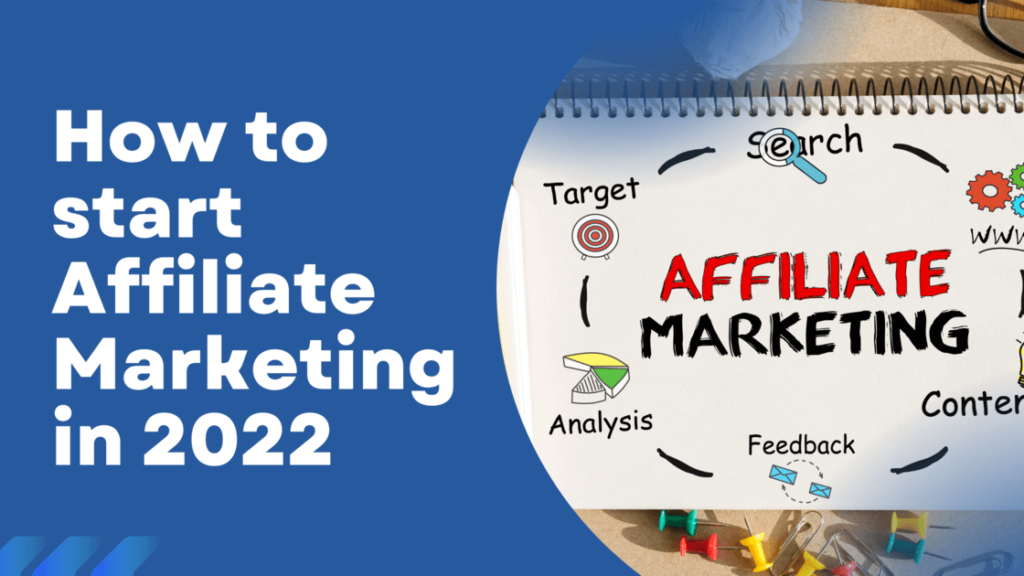Having a strong online presence is crucial for any business looking to reach new heights. When it comes to the B2B model, there’s no platform like LinkedIn.
With its network of over 700 million users worldwide, LinkedIn provides a unique opportunity for businesses to engage with industry leaders, establish thought leadership, and generate valuable leads. In this blog post, we’ll guide you through everything you need to know about leveraging LinkedIn for Business and achieving B2B success.
Why LinkedIn is Valuable for Businesses
LinkedIn offers immense value for businesses, especially in the B2B sector. With over 740 million members worldwide, LinkedIn provides a unique opportunity to connect with professionals and decision-makers from various industries.
One of the key reasons why LinkedIn is valuable for businesses is its ability to establish credibility and trust. By creating a professional business profile, companies can showcase their expertise, highlight their achievements, and share valuable insights within their industry. This not only helps build brand awareness but also positions them as thought leaders in their field.
Additionally, LinkedIn offers a wide range of networking opportunities. Businesses can join relevant groups and engage in meaningful discussions with industry peers and potential clients. By actively participating in these conversations, companies can expand their network and forge valuable connections that may lead to new business opportunities.
Furthermore, LinkedIn’s advertising options allow businesses to target specific audiences based on criteria such as job title, industry, or company size. This level of targeting ensures that your message reaches the right people at the right time, increasing the chances of generating quality leads.
By creating a professional business profile, engaging in meaningful conversations, and utilizing LinkedIn’s advertising options, businesses can maximize the platform’s potential and take their success.
Understanding the B2B Market on LinkedIn
One of the key advantages of using LinkedIn for B2B marketing is its professional nature. Unlike other platforms, where users might be more interested in personal updates or entertainment, LinkedIn users are actively seeking business-related content and connections.
To effectively navigate the B2B market on LinkedIn, start by identifying your target audience. Utilize advanced search filters to find prospects based on specific criteria such as job title, company size, or industry. This will help you tailor your messaging and approach to resonate with their needs and challenges.
Another important aspect of understanding the B2B market on LinkedIn is staying up-to-date with industry trends and conversations. Join relevant groups and participate in discussions related to your niche. This not only helps you establish thought leadership but also allows you to gain valuable insights into what your target audience cares about.
In addition, leveraging content marketing can significantly boost your visibility within the B2B market on LinkedIn. Share informative blog posts, articles, or whitepapers that provide value to your audience. By positioning yourself as an expert in your field through quality content creation, you can attract potential clients who are searching for solutions that align with what you offer.
Connect with professionals in complementary industries or those who may benefit from partnering with your business. Building strong relationships can lead to mutually beneficial opportunities like referrals or collaborations that expand both parties’ reach.
Optimizing Your Business Profile on LinkedIn
Your business profile on LinkedIn is the representation of your business in the professional world. It’s crucial to optimize it for maximum visibility and engagement. Here are some key steps to consider when optimizing your LinkedIn profile.

- Complete all the sections of your business profile – Provide a clear and concise description of your company, including its mission, values, and specialities. Use relevant keywords throughout the content to enhance searchability.
- Showcase your products or services – Add media files such as videos or presentations. This visual content can help potential clients understand what you have to offer and increase their interest in working with you.
- Endorsements and recommendations – encourage satisfied clients or colleagues to leave positive feedback on your page. These testimonials build credibility for your business and can attract more connections.
- maintaining an active presence on LinkedIn – regularly share industry insights, thought leadership articles, or updates about your company’s achievements. Engage with other professionals by commenting on their posts or participating in relevant groups.
- keep track of analytics – so that you can measure the effectiveness of your profile optimization efforts. Monitor metrics such as views, engagement rates, and conversion rates to make data-driven decisions for improvement.
Building a Strong Network and Establishing Thought Leadership
Building a strong network and establishing thought leadership are essential components of leveraging LinkedIn for B2B success.
To build a strong network on LinkedIn, start by connecting with individuals who align with your target audience or industry. Look for professionals who are active on the platform and have similar interests or expertise. Personalize connection requests to make them more genuine and increase the likelihood of acceptance.

Once connected, engage with your network regularly by liking, commenting, and sharing their content. This helps to foster relationships and keeps you top-of-mind in their feed. Additionally, share valuable insights, industry news, and thought-provoking articles to position yourself as a trusted authority within your niche.
In addition to engaging with others’ content, create your own original content that provides value to your network. Publish articles on relevant topics or share informative videos or infographics. Consistency is key – aim to post consistently so that your audience knows when to expect new content from you.
Participating in relevant LinkedIn groups can also help expand your reach and establish yourself as an expert in your field. Join groups where potential clients or industry leaders are active and actively contribute by answering questions or sharing insights.
Consider utilizing LinkedIn Live video broadcasts or hosting webinars through LinkedIn Events to further showcase your knowledge and expertise while interacting directly with members of your network.
Building a strong network takes time and effort, but by consistently adding value to your network, you can establish yourself as a trusted authority and build valuable relationships that can lead to new business opportunities.
Utilizing LinkedIn Advertising for Increased Exposure
One of the key advantages of LinkedIn advertising is its precise targeting options. You can narrow down your audience based on job titles, industries, company size, and more. This allows you to reach the exact professionals who are most likely to be interested in your products or services.
LinkedIn advertising also offers a wide variety of ad formats. From sponsored content that appears in users’ feeds to dynamic ads that personalize messages for each user, there are multiple ways to engage with your target audience effectively.
To make the most out of your LinkedIn ads, it’s essential to create compelling and relevant content. Craft attention-grabbing headlines and use high-quality visuals that resonate with your target audience. Additionally, consider using video ads as they tend to generate higher engagement rates.

Tracking and measuring the success of your LinkedIn ad campaigns is crucial. Use analytics tools provided by LinkedIn to monitor impressions, clicks, conversions, and other important metrics. This data will help you refine your strategies and optimize future campaigns for better results.
With precise targeting options, a variety of ad formats, and the ability to track and measure success, it’s worth exploring this platform as a part of your advertising strategy.
Measuring Success and Adjusting Strategies on LinkedIn
After optimizing your business profile and creating a strong network on LinkedIn, it’s essential to measure the success of your efforts and adjust your strategies accordingly. You want to ensure that your B2B marketing endeavours on this platform are yielding tangible results.
One way to measure success on LinkedIn is by tracking key metrics such as engagement rate, reach, and click-through rates. Analyzing these metrics regularly can give you insights into the effectiveness of your content and identify areas for improvement.
Take advantage of LinkedIn’s analytics tools to monitor the performance of your posts and campaigns. This data can help you understand which types of content resonate most with your target audience and inform future content creation.
Monitoring lead generation is also crucial for measuring success on LinkedIn. Use conversion tracking tools offered by the platform to track how many leads or sales are being generated through LinkedIn campaigns. This information will allow you to optimize your ad targeting or refine messaging based on what works best for driving conversions.
It’s also essential to keep an eye on your competitors’ activities. Analyze what tactics they are using successfully and adapt them while adding unique elements that differentiate your brand.
Based on the insights gathered from these measurements, adjust your strategies accordingly. Experiment with different types of content formats like articles, videos or infographics. Test different posting times and frequencies to maximize engagement levels with potential clients in various time zones.
Keep in mind that successful strategies require ongoing refinement. Regularly review the data collected from various analytics sources provided by LinkedIn itself, as well as other third-party tools integrated with the platform.
By consistently monitoring outcomes through the measurement techniques mentioned above and adapting when necessary, brands can continuously improve their B2B marketing efforts without wasting time or valuable resources blindly.
Common Mistakes to Avoid on LinkedIn
There are several mistakes that businesses often make on LinkedIn that can hinder their success. Here are some common mistakes to avoid on LinkedIn:

- Incomplete or Inaccurate Profile: One of the biggest mistakes businesses make on LinkedIn is not optimizing their profile properly. Ensure that your company’s profile is complete, including a clear and concise description, relevant keywords, and up-to-date contact information.
- Lack of Engagement: Many businesses fail to actively engage with their connections on LinkedIn. Remember, it’s not just about creating a profile; you need to participate in discussions, share valuable content, and respond promptly to messages or comments.
- Overly Promotional Content: While promoting your products or services is important, bombarding your network with constant sales pitches can be off-putting. Instead, focus on providing informative and useful content that showcases your expertise without being overly promotional.
- Ignoring Analytics: LinkedIn provides valuable analytics tools that can help you track the performance of your posts and campaigns. By monitoring these insights regularly, you can identify what works best for your business and make informed decisions moving forward.
- Neglecting Personal Profiles: Don’t forget about personal profiles within your organization. Encourage employees to create professional profiles linked to the company page as this adds credibility and expands reach through their networks.
- Underestimating Groups & Communities: Joining relevant groups and communities allows you to connect with like-minded professionals outside of your immediate network while staying updated with industry trends. Engage in conversations by sharing insights rather than solely self-promoting.
- Missing Out on Advanced Search Options: Take advantage of LinkedIn’s powerful search features which allow you to find potential clients or partners based on specific criteria such as industry type, location, etc., helping maximize targeting efforts.
By avoiding these common mistakes on LinkedIn, B2B companies have an opportunity to leverage the platform effectively for increased visibility, brand recognition, lead generation, and overall success.
Conclusion
LinkedIn has proven to be an invaluable tool for businesses looking to tap into the B2B market. With its vast network of professionals and robust features, this platform offers unique opportunities for companies to connect, engage, and grow their business.
By optimizing your business profile on LinkedIn and building a strong network, you can establish yourself as a thought leader in your industry. This not only boosts your credibility but also opens doors for potential partnerships and collaborations.



